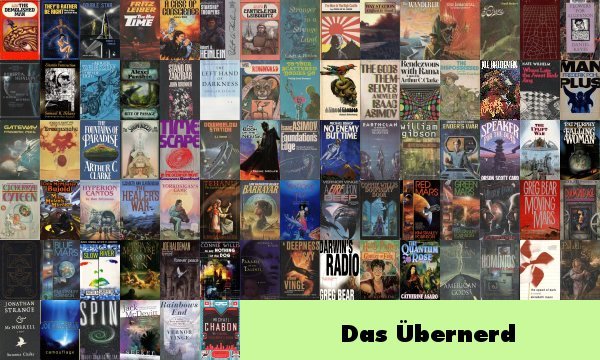 Batman: The Killing Joke Written by Alan Moore; Art by Brian Bolland 1989 Eisner Winner for Best Graphic Album 1989 Eisner Winner for Best Writer 1989 Eisner Winner for Best Artist
Batman: The Killing Joke Written by Alan Moore; Art by Brian Bolland 1989 Eisner Winner for Best Graphic Album 1989 Eisner Winner for Best Writer 1989 Eisner Winner for Best ArtistSo how does one follow up the creation of what is generally considered the high water mark of a medium? Orson Welles created another masterpiece only to have the studio bosses hack it to pieces behind his back. Alan Moore fared a bit better since he took the same concepts he worked with in Watchmen and applied them to Batman. The result is one of the three Batman stories that I think are exceptional (the other two being Miller's bookends to the character Year One and The Dark Knight Returns, naturally).
I'm sure you're familiar with Batman and The Killing Joke follows the familiar beats that kept the character in continuous publication for seventy years. The mad clown known as the Joker escapes from the asylum that holds him in order to do terrible things. Batman chases the Joker down where they hit each other until the Joker gets sent back to the asylum to start the cycle over again.
The first clever bit of this story is that Moore acknowledges that Sisyphean cycle. The Killing Joke opens with Batman going to visit the Joker in his cell to try to break it by reaching out to him. The Joker has already escaped and it attempting to break the cycle by escalating it to the level of a suicide pact. The conflict this time isn't about a climactic fist fight (though that's in there too); it's about one man trying to pull the second back from the abyss and the second trying to pull the first in.
This leads into what I think is the only misstep that Moore makes in The Killing Joke. It's not entirely his fault; when you're the man who sets the trends for the medium you can't take blame when others over use your techniques and do them badly. The sequence is the maiming of a long standing female cast member followed by a sexual assault. If it existed in a vacuum then it would just be a disturbing sequence that established that the Joker was trying to mentally break Batman. Unfortunately in the years that followed this exact kind of method has been used often for cheap shocks and lazy writing. Moore didn't invent it but he brought the concept of using this level of brutality against female characters as an emotional hook to comics and these days it seems like every other woman in superhero comics winds up being abused like that.
Besides that it also has an unfortunate affect on the conclusion of the book. There's some unpleasant connotations that are raised by the last few pages given the earlier events.
The Killing Joke uses this shock to tie Batman and the Joker together thematically. Moore flashes back to a possible origin of the Joker as a decent man who had one very bad day and snapped and now the Joker is trying to replicate that. It's the classic hero and villain are closer than they seem theme but it's executed very well.
So Moore's story is extremely good. You'll notice that his partner Brian Bolland won an Eisner of his own for this book and it wasn't because he was swept in by the popularity of The Killing Joke. There's several points in the story where the action becomes a textless montage. It's a challenge to carry the narrative without text and Bolland does it perfectly. All of his storytelling ability is on display through the book. thing that makes his artwork truly spectacular is how he depicts the Joker. The nightmarish grin has never been depicted so gruesomely. Bolland's Joker doesn't always smile but when he does the face distorts in a way that is unnerving. The gums show more than is natural, the chin distends, it looks like his whole jaw fractures to make the smile taller.
The Killing Joke is a an alchemical fusion of the perfect writer for a subject and the perfect artist for a subject. Together Moore and Bolland created a masterpiece. If you like Watchmen then I recommend reading it as a companion.

